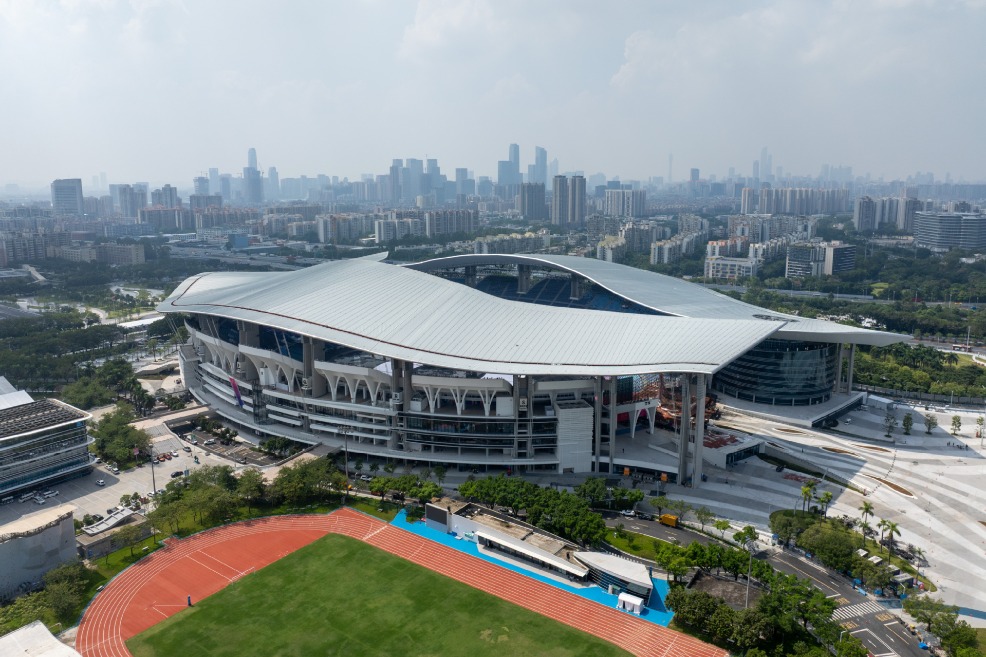Initiative based on principle of win-win cooperation


As the best embodiment of win-win cooperation, the Belt and Road Initiative seeks to foster mutual benefit by integrating the economic development of China with that of the rest of the world. China can ensure cooperation leads to mutual benefit because it is the world's largest trader of goods and second-largest of services, accounts for about 10 percent of the world's total imports and 20 percent of import growth, and is the largest trading partner of more than 120 countries and regions.
Which means China's development has positive spillover effects on the world economy, especially as China is one of the largest overseas investors, and 46.2 percent of its exports in 2017 were destined for developing countries and emerging markets.
BRI a global project of more than $1 trillion
The latest World Bank report says the Belt and Road Initiative is a global project whose financial scale has exceeded $1 trillion, larger than any initiative proposed by any other country. China's trade and investment growth directly drive the development of the countries participating in the initiative, which in turn helps boost global development.
The initiative will help integrate various elements and resources in Asia, Africa and beyond, and prompt more countries and regions to deliver more international public goods, by connecting and matching the demand and resources and thus creating new channels and a new pattern of global supply of public goods. This will increase the development opportunities for Belt and Road countries, especially those with a relatively slow growth rate, as well as give a shot in the arm to global economic development.
A research report released by the World Bank says the initiative will "significantly reduce shipment times and trade costs". Globally, the "average reduction in shipment time will range between 1.2 and 2.5 percent, leading to reduction of aggregate trade costs between 1.1 and 2.2 percent". For the Belt and Road economies, the "change in shipment times and trade costs will range between 1.7 and 3.2 percent and 1.5 and 2.8 percent, respectively". As a consequence, the global economic growth rate is expected to increase by at least 0.1 percentage points.
It is fair to say the Belt and Road Initiative operates under international rules, although the rise of emerging market economies and developing countries demand that some of the existing international rules be changed to make them more inclusive.
China committed to protecting multilateral trading system
China adheres to the simultaneous development of regional and global economies. That's why it seeks to not only safeguard the multilateral trading system, but also promote regional economic integration. Upholding the rules of the World Trade Organization, China regards the Belt and Road Initiative as an important platform that would allow it to help formulate fair, reasonable and transparent international trade and investment rules.
To begin with, in order to fully implement the WTO Trade Facilitation Agreement, China first needs to meet the basic requirements of the TFA of achieving fast, accurate, fair and safe customs clearance. As such, it must deepen customs reform, by strengthening multilateral and bilateral cooperation and exchanging policies on standards, inspection and quarantine with other economies.
Second, to actively support the WTO's Aid for Trade program, China should provide aid for other developing countries and the least developed countries to help them build infrastructure facilities and increase their production capacities, impose zero tariff on their goods, and support their participation in the multilateral trading system.
In fact, since 2018, China has imposed zero tariff on 97 percent of the products imported from 33 least developed African countries that have diplomatic relations with China. Perhaps China should extend the policy to low-income and lower-middle-income countries along the Belt and Road routes, because it would benefit more than 2 billion people.
Need to open up govt procurement market
Third, to fully accede to the WTO Government Procurement Agreement, China must open up the government procurement market, make the government procurement process more transparent, and actively promote international trade and liberalization.
Fourth, to accelerate the construction of a high-standard free trade zone, China should gradually eliminate the tariff and non-tariff barriers for most commodities by signing free trade agreements with other economies, and deepen mutually beneficial multi-level cooperation with them, so as to promote economic integration along the Belt and Road routes.
And fifth, to stimulate the establishment of a multi-level investment security system, China needs to encourage the sustainable and healthy development of foreign capital in the country and make efforts to liberalize the process of international investment. To achieve that, it needs to reduce investment risks and improve the investment environment by strengthening the legal system to better protect the legitimate rights and interests of foreign investors and foreign-invested enterprises.
The Belt and Road Initiative is not limited to a specific country or region. It is an open initiative for Asia, Europe, and the world beyond. Its great significance lies in its win-win principle. Taking the initiative as the starting point, China needs to work out a new model of global governance, help build a new order by joining hands with other economies to devise new trade rules that are inclusive in nature and beneficial to people across the world, as that is what win-win cooperation is all about.
The author is dean of the Institute for Contemporary China Studies and a professor at School of Public Policy and Management, Tsinghua University. The views don't necessarily reflect those of China Daily.


































